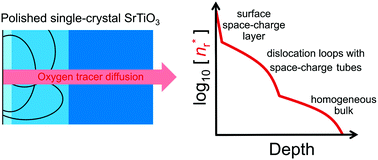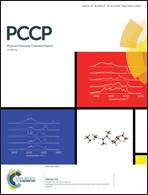The blocking effect of surface dislocations on oxygen tracer diffusion in SrTiO3
Abstract
The existence of a polishing-induced damaged zone at the surface of standard, nominally undoped, single-crystal SrTiO3 is exploited in diffusion studies in order to investigate the interaction between oxygen vacancies and dislocations. Tracer diffusion profiles for such crystals are proposed to exhibit three features: a short feature arising from a surface space-charge layer; an intermediate, longer feature arising from the high density of dislocations in the damaged zone; and finally, a much longer feature corresponding to diffusion in the homogeneous bulk crystal. Quantitative information is provided by finite-element-method calculations. First, the distribution of oxygen vacancies in a sample in which space-charge zones depleted of oxygen vacancies form at dislocations and at the sample surface is calculated; subsequently, oxygen tracer diffusion profiles for such vacancy distributions are simulated. The proposed model is experimentally validated by performing conventional oxygen isotope exchange and depth-profiling experiments on commercial single-crystal SrTiO3. In this way, we confirm directly that arrays of dislocations in acceptor-doped SrTiO3, by virtue of the attendant space-charge tubes, hinder the diffusion of oxygen. Finally, in order to aid the prediction of oxygen tracer diffusion profiles in polished perovskite single-crystal substrates, we suggest a one-dimensional continuum approach that takes account of the complex, three-dimensional diffusion problem posed by dislocation arrays with depletion space-charge tubes.



 Please wait while we load your content...
Please wait while we load your content...